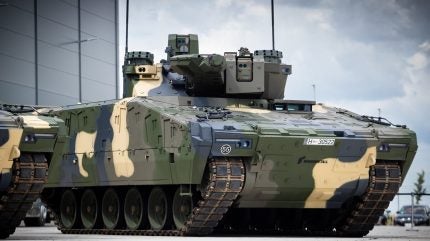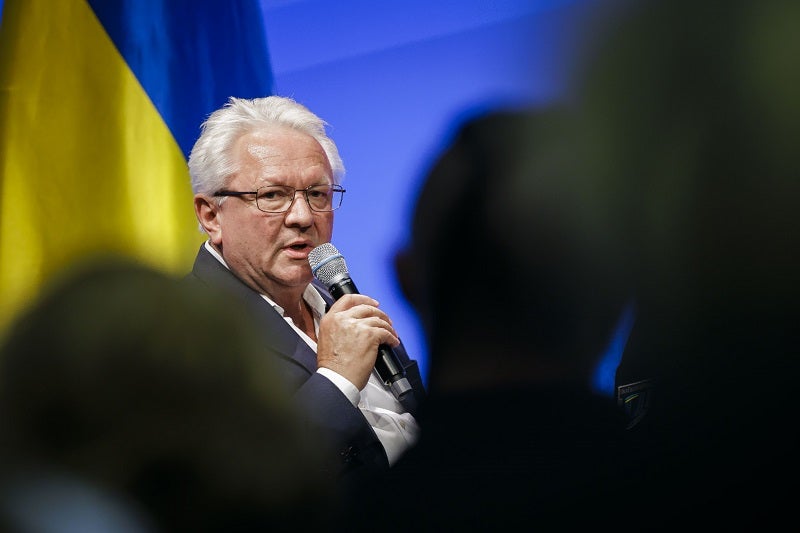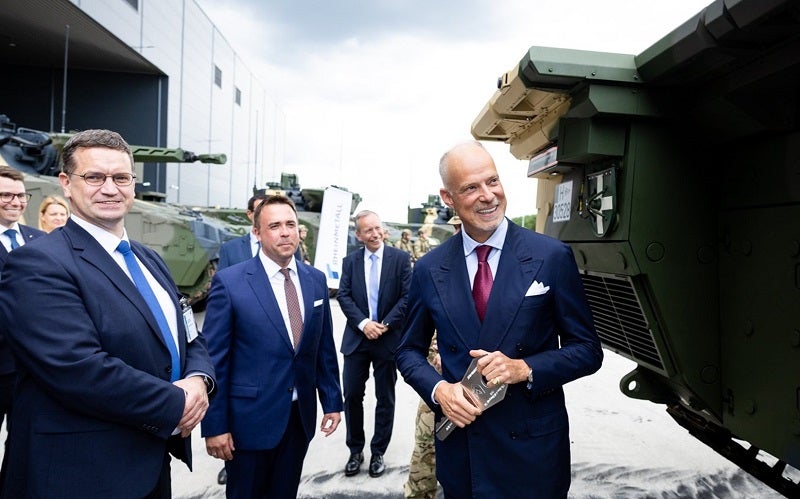
Rheinmetall has delivered the first Hungarian-made KF41 Lynx Infantry Fighting Vehicle (IFV) to Hungary and, separately, revealed that the first Lynx to Ukraine will be delivered before the end of 2024.
Germany’s foremost arms manufacturer constructs the Lynx at a production facility based in Zalaegerszeg, western Hungary; this site was opened in August last year.
Lynx is a next-generation, tracked IFV; it is is equipped with active, passive and reactive systems to offer protection against rocket-propelled grenades and anti-tank guided missiles.
The KF41 can be configured as infantry fighting vehicle, command and control vehicle, armoured personnel carrier, ambulance, reconnaissance vehicle, medical evacuation platform, and repair and recovery vehicle.
According to GlobalData intelligence, the Hungarian Army already operates eight Lynx units acquired between 2022 and 2023. However, these platforms were produced in Germany while the Hungarian site was beginning production.
The Central European nation has ordered a total of 217 Lynx units. Only 45 units in the order will be produced in Germany, worth $290.4m, while the remaining 172 vehicles are built indigenously, valued at nearly $550m.
Likewise, the supplier will emulate its Hungarian infrastructure in Ukraine, where a production site was opened on 10 June, according to Rheinemtall CEO, Armin Papperger, during a panel discussion at the Swiss-based Ukraine Recovery Conference a day later.
“We are repairing infantry fighting vehicles there, and later we will repair howitzers there. But the most important thing we have agreed on is that at the end of this year we will have the first infantry fighting vehicle made in Ukraine,” Papperger revealed.

Long-term industrial strategy
Papperger added that government support must be increased and longer-term cooperation ought to be planned, ‘and now we have a strategy for six, maybe 12 months. This is not enough if you are waging a war against Russia, a very dangerous counterpart. I really hope that this will not happen, but if Ukraine loses, Europe will have a very large-scale problem.”
When Hungary’s first indigenous KF41 was unveiled this week, the nation’s Minister of Defence, Kristóf Szalay-Bobrovniczky, also considered the importance of sovereign industry, stating that Central and Eastern Europe “has demonstrated once again that no defence industry – no capacities for manufacturing tanks and munitions – can be improvised,” nations require a longer term approach.

The European Commission and the European Defence Agency have begun to implement a longer-term approach to the continent’s collective industrial plan. In April, the two bodies released the European Union’s (EU) first ever defence industrial policy, and with it €1.5bn ($1.63bn).
Among other new, major industrial objectives, the EU have pledged to procure at least 50% of their defence procurement budget within the EU by 2030 and 60% by 2035.
Until now, much like other countries, the EU has pursued a short-term strategy. In July last year, the European Parliament and Council agreed to a regulation under the Act in Support of Ammunition Production – suitably acronymised ‘ASAP’ – in which the Union allocated €500m ($545.4m) to support Europe’s constrained ammunition and missile suppliers.


